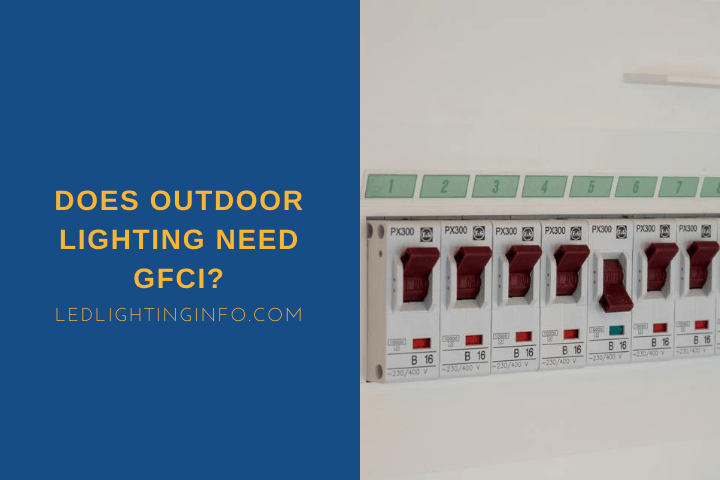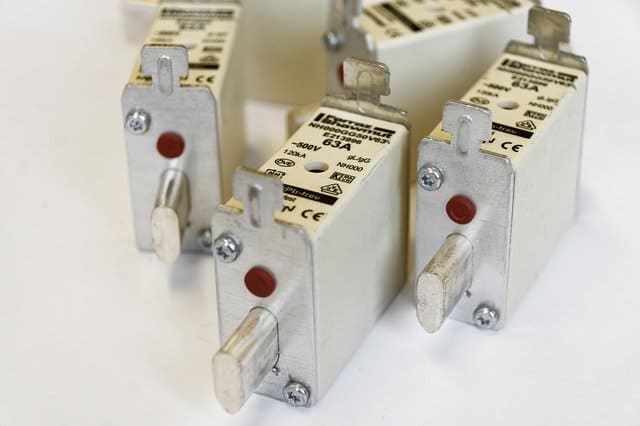Let’s cut to the chase. Lighting the exterior of your home is much more complicated than lighting your indoor living space.
After all, the bulbs that you choose will be exposed to all sorts of crazy weather conditions. From snow and sleet to wind and rain, you name it!
As children, one of the earliest scientific lessons we’re taught is that water and electricity are a dangerous mix.
But what does this mean for outdoor lights? How can you ensure that your exterior lights are safe?
According to section 210.8 of the National Electric Code (NEC), all outdoor receptacles must be protected by a ground fault circuit interrupter (GFCI). These nifty devices are designed to sever electrical circuits if they sense an imbalance, thus preventing electrocution.
Interestingly, research by the Electrical Safety Foundation International demonstrates that since GFCIs were introduced in the 1970s, the annual number of electrocutions has declined by 83%!
Does this mean that NECs regulations have worked? Or have the requirements become so strict that they’re unworkable? Stay tuned to find out.
What Is GFCI And Why It’s Useful?
When you’re handling electricity, it’s essential to take due care, that’s why rules and regulations exist.
In the U.S and Canada, all electrical wiring is regulated by the National Electric Code (NEC). According to s.90.1(a), the purpose of the code is “the practical safeguarding of persons and property from hazards arising from the use of electricity.”
So you see, it’s all about safety.
Under these standards, many electrical systems require a ground fault circuit interrupter (GFCI).
GFCIs are designed to continually monitor electrical input. If they detect a flow of electricity to a grounded surface, they automatically trip and de-energize the circuit.
They’re based on the premise that electricity flows at a uniform rate. Hence, a surge of electricity indicates a potentially hazardous abnormality.
GFCIs are commonly used in areas where water is likely to come into contact with electricity i.e., bathrooms and kitchens. In these locations, GFCIs play an important role in preventing electrocutions.
I know what you’re thinking… “ isn’t GFCI just a fancy name for a circuit breaker?”
I understand the confusion; the two devices are very similar. However, GFCIs are generally more sensitive than circuit breakers. This means they respond to a higher number of electricity fluctuations.
Moreover, circuit breakers are designed to protect against electrical overloads and resulting fires. GFCIs, whereas, are designed to protect against electrocution.
Where Is GFCI Required?
The GFCI requirements are a relatively recent development, having first been introduced in 1971.
Initially, the code mandated GFCI receptacles at the exterior of a house and by swimming pool equipment.
However, the regulations have grown tremendously over the years. Nowadays, GFCIs are generally required in commercial and dwelling units within 6 feet of all plumbing fixtures.
What does this mean for you?
Article 210.8 of the NEC states that GFCIs shall be used for all 125-volt, single-phase 15 and 20 amp receptacles installed in the following locations:
- Bathrooms: all receptacles must be GFCI protected.
- Kitchens: GFCI protection is required for all receptacles that serve kitchen countertop surfaces.
- Crawl spaces and basements: GFCI protection must be installed within dwelling crawl space or in each unfinished portion of a basement not intended as a habitable room but used for storage or as a work area.
- Swimming pools: GFCI protection is required for all luminaires, circulation, sanitation equipment, and pump motor receptacles located within 20ft of a swimming pool.
- Sinks: Receptacles installed within 6ft of the outside edge of a wet bar sink must be GFCI protected.
- Temporary wiring systems: all receptacles must be GFCI protected.
- Outdoors: all receptacles outside of a dwelling unit, including under the eaves of roofs, shall be GFCI protected. The only exception is that GFCI is not required for fixed electric snow melting or de-icing equipment.
So, to answer my original question: yes, outdoor lights need to be plugged into GFCI-protected receptacles.
On top of this, one GFCI receptacle is required at the front and back of the home, at a maximum height of 6 feet 6 inches off the ground. One receptacle is also required on each patio, deck, porch, or balcony.
What Are The GFCI Outlet Requirements?
Now that you understand what GFCIs are and where they’re required, it’s time to talk about the outlets themselves.
GFCI receptacles look much the same as standard household outlets. They feature the same three-prong plug-in slots, plus two extra buttons that say ‘test’ and ‘reset.’
Most GFCIs are designed to trip when current leakage exceeds 4 – 6 milliamperes (mA). This is regarded as a dangerous amount of current flowing where it shouldn’t be.
In terms of their location, the regulations dictate that GFCIs should be readily accessible. This is to ensure that GFCIs can be tested regularly.
Under section 210.8, GFCIs should be capable of being reached quickly for operation, renewal, or inspections without requiring personnel to use tools, to climb over or remove obstacles, or to resort to portable ladders, and so forth.
Hence, it’s important to bear this in mind when designing your outdoor lighting and electricity set-up.
Furthermore, under the NEC, there’s no limit to the number of receptacles allowed per 15A or 20A circuit.
However, the GFCI receptacle must be first in line. This enables the GFCI to protect all of the other receptacles further down in the circuit.
Also read: What Amp Fuse For Outdoor Lighting?
Do Outdoor Lights Need To Be On Their Own Circuit To Have GFCI?
Section 210.8(f) of the NEC states that all outdoor outlets must be GFCI protected, so does this mean that each set of outdoor lights needs to be on a separate circuit?
The answer is… no!
As I just mentioned, there’s no requirement for a GFCI receptacle at each location. As long as the total is less than the GFCI device’s capacity, it doesn’t matter how many receptacles are connected.
Most GFCIs will protect up to 20 amps, and this can be drawn from any number of receptacles.
That being said, there are benefits to putting your outdoor lights on individual circuits. Namely, if one circuit trips, the rest will continue working.
If your lights are on the same circuit and they all trip out, the exterior of your home may be left in complete darkness. This could be annoying if you’re arriving home from work late at night.
Final Words
So there you have it! GFCIs have played an important role in electrical safety over the last 50 years. I can only imagine how many incidents they’ve prevented.
While the NEC is the leading authority on GFCIs, your local government has the final say. If you’re unsure about what’s required, please consult your local building authority.
Do you have your outdoor lights connected to one GFCI? Or do you prefer to have each set of lights on an individual circuit? Let me know down below!



